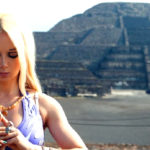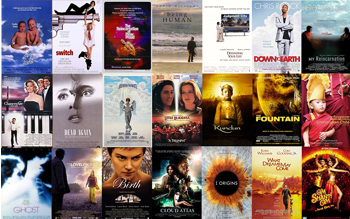This belief in periodic reimbodiment or reincarnation is, of course, a central theme of many Eastern religions. In the temples of India and among the people it is accepted as one of nature’s “eternal ways.” In China and Japan, the Taoist and Zen masters spoke of it in their esoteric teachings. Among the philosophers of the West who taught it in ancient days were Plato and Pythagoras, the church fathers Origen and Clemens Alexandrinus, and in more recent times reincarnation absorbed the intellects of Goethe, Leibniz, and Schopenhauer and inflamed the poetic genius of Wordsworth, Masefield, Whitman, and Browning.
It is not widely realized, however, that reincarnation is an essential tenet of many traditional African religious systems and philosophies. Belief in rebirth has been reported amongst peoples scattered the length and breadth of the mighty continent: Akamba (Kenya), Akan (Ghana), Lango (Uganda), Luo (Zambia), Ndebele (Zimbabwe), Sebei (Uganda), Yoruba (Nigeria), Shona (Zimbabwe), Nupe (Nigeria), Illa (Zambia), and many others. There is, of course, a wide variation in understanding of the processes of rebirth: beliefs range from that in a “partial” reincarnation of an ancestor in one or several individuals strictly within the same family, to that in an endless cycle of rebirths linked to a notion of cleansing and refinement of the inner nature.
As there are endless shades of understanding, reincarnation is known by many names: amongst the Yorubas of Nigeria rebirth is referred to in various ways, including Yiya omo, translated as the “shooting forth of a branch” or “turning to be child,” and A-tun-wa, “another coming.” The Aboh-speaking peoples of the Ibo family of nations in Nigeria speak of Inua u’we or “returning to life,” as they believe death is an end to one life only and a gateway to another; man must be reborn, for reincarnation is a spiritual necessity.
The ancient theosophy underlying traditional African religions becomes even more apparent as we delve into the fascinating complexities of their interpretations of the doctrine of rebirth. There seems to be a common belief amongst them that the wave of human souls at any particular world period is limited in number; therefore reincarnation is only logical. For example, the Illa people of southern Zambia believe that a certain number of spirits were created and given bodies at the dawn of manifestation. When the bodies wear out during the course of a lifetime, the spirits live on in their own sphere of consciousness and then have other bodies prepared for them at the appropriate time. Linked with this is a belief in the inevitability of rebirth for the majority of humanity with only two exceptions cited by the Illa elders — the mizhimo or “tribal gods,” and those unfortunate individuals whose spiritual evolution has in some way been interrupted by sorcerers. The Illa also believe that the reincarnating spirit is sexless and may seek manifestation in either the body of a man or woman regardless of the individual’s sex in a previous life. They say, in common with the esoteric teachings of many other religious traditions, that the incarnating spirit, the true Self of each individual, provides to the newly-born child no memory of previous lives in the worlds of either spirit or matter. During life, the spirit animates the body but remains untainted by the vicissitudes of daily living. One is reminded of the ancient Greek myths regarding the river of Lethe or Forgetfulness in the Underworld, from which those about to be reincarnated drank a certain portion which made them forget their former existence.
Locked deep within these traditions, we can discern the hidden mechanisms of nature and the eternal ebb and flow of manifestation as described in the traditions of peoples the world over. We are told in The Secret Doctrine,for example, that the number of entities within any sphere of life at any given time is limited by karmic considerations. For the vast majority of humanity struggling within the limbo world of material attractions in order to attain true self-consciousness of the inner spiritual nature, reincarnation is indeed a necessity. As bodies appropriate for different stages of evolution wear out, the eternal spiritual Self of each individual continues from birth to birth, clothing itself in the appropriate vehicle through which it can express its potentialities as these are evolved through the experience of many lives. The only exceptions to this “cycle of necessity” are entities who, by constant striving after the higher realities, have escaped the endless round of reincarnation and become as gods to us and, at the polar opposite, chose who have consciously violated nature’s law of spiritual evolution. As the Illa leaders tell us in their own way, the spiritual Self seeks manifestarion in a body of either sex at different times on its long journey, and very few entities are exempt from the constant round of rebirth.
As in other religious traditions, mystery enshrouds details of African doctrines concerning the embodiment of the spiritual Self. We do know, however, that many African peoples have beliefs in the composite nature of man remarkably similar to the more familiar religious teachings of the East and Near East. The ancient Egyptians held man to be a composite of nine parts ranging from the physical body khat to the habitation of the spiritual nature, the sahu. The ancient Jewish teachings of the Qabbalah speak of man as a tenfold entity, and the esoteric traditions of India, which provide much of the terminology of modern theosophy, teach variously of four, five, or seven aspects or parts. All of these traditions agree that it is only the deathless essence of man’s nature which continues eternally, while the more material “bodies” fall apart at death, when the life force is withdrawn.
On the accompanying chart which compares the traditions of four African peoples with theosophical doctrines concerning the composite nature of man, remarkable parallels are immediately apparent. All envisage a spiritual body (a life essence or “vital breath”) ac one extreme, with gradations through hearc-soul, menial body, or will, and life principle, to the “shadow” and physical body as the lower vehicles. In all four examples the reincarnating entity is held to be the spiritual essence which abides in its own spheres of existence after death, and animates the more material “bodies” during earth life.
The inner constitution of man as pictured by different African traditions and in theosophical teachings
Among the Yoruba of Nigeria this process is understood in the restricted sense of an ancestor’s okan or “heart-soul” seeking manifestation amongst his own descendants. It is not clear how the emin or “spiritual body” relates to the process, though it is commonly regarded by the Yoruba as the ultimate seat of life. In Nupe (Nigeria) tradition, it is the kuci or “personal soul” which is said to animate the child of descendants at birth. The kucit is thought to return to Soko (God) for a defined period before incarnating, and the Nupe tribesmen illustrate the inevitability of the process of rebirth by comparing the journey of the kuci after death to the path of a stone thrown in the air: sooner or later it has to land somewhere! The rayi or “life essence” is said to he reabsorbed at death into the ongoing process of creation, and to give life to the reincarnating entity without actually entering into the physical body. The Illa moza or “vital breath” is believed to animate the body in terms similar to Biblical myths.
As each day brings challenges which have been roughhewn by our past experiences which, with the passage of years molds and refines character, so reincarnation has been pictured in many religious traditions as nature’s way of bringing the spiritual essence at the heart of every being to greater self-consciousness through the fires of material experience. The cleansing and refining of the inner nature in man through myriad lives lies as a spiritual necessity at the center of some African traditions regarding reincarnation. This is especially so among the Akan people of Ghana who speak of rebirth as essential so that each individual can reach his or her full potential for compassion:
It is like a man who dips a bucket in a deep well. The weight of the bucket when lifted up from the well would tell whether it is full of water or not. If it is felt to be light and not full, down goes back the bucket . . . until the weight assures the man the bucket is full. So is the soul’s coming forth and going back into the source. He is not lifted up and taken into service with the source until his bucket of nkrabea [individual essence or destiny conferred by Nyankopan, an aspect of God] is completely filled with good — until the destiny of the soul is fully realized. And then it is a glad homegoing for the fully integrated soul. The return of a soul to earth is not therefore like a condemned criminal to be hanged, but more like a little child ready to learn more and to do better. — The Akan Doctrine of God, p. 81 Like a golden thread hidden in the coarse fabric of human experience, the reality of man’s inner spiritual nature proclaimed by the ancient wisdom can be found in religious philosophies the world over, if one but searches diligently. The secret teachings concerning the ebb and flow of spiritual manifestation in matter, once whispered in the halls of the Mystery Schools of Asia, Europe, and the Americas, find their echo in the elder’s hushed chanting by the nickering firelight at an initiation ceremony somewhere in deepest Africa.








